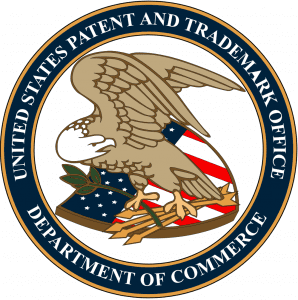Always file for trademarks early in the life of a business. Once business “gets busy,” trademarks are often an overlooked item. ~ Doug Lineberry, Principal, Offit Kurman law firm
Navigating the complex terrain of intellectual property can be a formidable challenge for startups. This article distills crucial strategies to safeguard innovation, drawing on the wisdom of industry experts. Learn how to fortify intellectual assets from inception through growth, and gain a competitive edge.
- Implement Strong Confidentiality Agreements
- File Multiple Provisional Patent Applications
- Conduct Early IP Audits
- Protect IP Early Against Competitors
- Develop Comprehensive IP Agreements
- Hire an IP Attorney
- File Trademarks Early
- Create Multi-Layered Protection Framework
Implement Strong Confidentiality Agreements
As a security specialist who’s been in the trenches with startups, I can tell you that protecting intellectual property is no joke. One strategy that really paid off for us was implementing strong confidentiality agreements right from the start.
It might seem simple, but setting clear expectations with employees, contractors, and partners about IP ownership and confidentiality creates a solid foundation. We made sure that anyone with access to sensitive projects signed NDAs and IP assignment agreements as part of the onboarding process.
One important lesson I learned early on is that timing matters. We once brought in a subject matter expert to consult on a project, and during our initial conversations (before paperwork was signed), some sensitive details about the product were discussed. Luckily, we caught it in time and handed out the agreements before anything critical was shared. That experience taught me to never assume good intentions are enough or that it’s “too early.”
By having such agreements in place, we prevented a situation where a former employee attempted to solicit one of our clients and replicate our trademarked program for his new firm. Thanks to the clear and strong non-compete and confidentiality clauses we had in place, we were able to legally intervene and protect our business.
Bottom line, one should think of strong NDAs and IP assignment agreements like seatbelts. You hope you never need them, but when you do, they can save you from a lot of trouble and legal costs.
Denida Grow, Managing Partner – Protection and Intelligence Solutions, LeMareschal LLC
File Multiple Provisional Patent Applications
At the outset, filing multiple provisional patent applications was a highly effective strategy, particularly to cover the technological landscape from all facets. When you file provisional patent applications, you essentially stake your claim of ownership to multiple inventions or variations of your core technology while buying yourself 12 months to develop them further. This 12-month period proves invaluable support for the startup since it allows you to test market viability, refine the technology, conduct prior art searches to refine one or more embodiments, and attract investors while maintaining patent pendency.
Rather than filing a single broad provisional patent application, we were able to file separate provisionals for different components: one for the core algorithm and another one for the data processing framework. This overall approach created multiple priority dates and rather than filing a single broad provisional application, we were able to file separate provisionals for different components.
Simultaneously, we filed individual trademark applications for the startup’s brand encompassing the logo, word mark, and tagline to establish a recognizable identity in the marketplace. Registering trademarks not only protects the brand from infringement but also enhances its value over time. Once the initial trademark was filed, we subsequently filed an international trademark within 6 months of the basic trademark application date under the Madrid Protocol before WIPO, Geneva. This overall strategy allowed us for efficient IP registration of trademarks in multiple jurisdictions, facilitating international expansion without the need to file separately in each country.
By securing IP rights early in the development process, the startup was able to prevent competitors from entering the market with a similar technology product. Additionally, maintaining clear documentation and communication regarding IP ownership among team members helped avoid disputes later on.
Further, implementing comprehensive vendor agreements alongside its IP strategy experienced significant success. By drafting detailed contracts that included IP rights assignments and confidentiality clauses, the startup was able to collaborate effectively with software developers without risking their proprietary technology.
PRITY KHASTGIR, International Patent & Trademark Attorney, Tech Corp International Strategist
Conduct Early IP Audits
As an intellectual property (IP) attorney with years of experience working with startups, I understand the challenges new businesses face when it comes to protecting their innovations and brand identities. One of the most important strategies I recommend is early identification and protection of key intellectual assets—particularly patents, trademarks, and copyrights.
The strategy I employ most frequently is conducting an IP audit early in the startup phase. Many entrepreneurs, especially in tech or creative industries, overlook formalizing IP protections. Whether you’re building a new app, designing a product, or launching a service, securing your IP from the start is critical.
An IP audit involves evaluating all the creative assets your startup has developed—whether products, designs, branding, or software—and determining the appropriate IP protections to file for. This might include patents, trademarks, and copyrights. Early action ensures that you avoid disputes or IP theft as your business grows.
One startup I worked with, a tech-based e-commerce platform, had already gained some brand recognition but hadn’t registered their company name or logo as trademarks. After conducting the audit, we filed for trademark protection.
Not long after, a competitor attempted to launch a very similar brand. Thanks to our early trademark filings, we were able to send a cease-and-desist letter and resolve the situation quickly. The competitor had to abandon their branding, and our client retained their market position and brand identity.
This experience highlighted how essential it is to register trademarks early, especially when brand recognition is crucial. By having that protection in place, we avoided a costly legal battle and safeguarded the company’s reputation.
The key lesson here is the importance of proactive IP management. Many startups delay IP protection until their product gains traction, but that can be risky. IP theft or infringement can happen at any time, and without proper protection, your business may lose control over its assets or face expensive legal issues.
Don’t wait for trouble to arrive. Establishing a solid IP strategy early, including audits, timely filings, and understanding the IP landscape, helps you defend your assets before problems occur.
By acting early, you can focus on growing your business, knowing your intellectual property is safe.
Michael Cohen, IP Attorney, Cohen IP Law Group PC
Protect IP Early Against Competitors
It is crucial to think about your intellectual property strategy early on. Decide whether and how to protect it before you go out and use it. I have helped early protectors achieve great results against even mighty opponents. That is because a patent is a patent, and a trademark registration is a trademark registration, whether in the hands of a startup or a megacorp. On the other hand, I have seen late protectors forced to accept a lesser place in the world because they failed to protect their intellectual property early on—startups and megacorps alike.
Jeremy M. Stipkala, Ph.D., J.D., U.S. Patent Attorney, Thrive IP Intellectual Property Law Firm
Develop Comprehensive IP Agreements
As a CEO of a company that develops white-labeled software solutions, protecting our intellectual property is very critical for our business. We have developed comprehensive agreements and IP clauses for both our customers and our employees. This ensures that our solutions, our AI models, and proprietary frameworks remain secure. We also integrate encryption and access control measures to minimize the risk of unauthorized sharing or access.
We recently developed an AI-based solution for roofers to measure any roof using Google Maps for a customer. Our IP agreement stated that the IP would remain ours as we gave a significant discount to the customer. Later on, we expanded the same solution to other roofers as well, with a testimonial and reference from our customer. This approach not only protected our innovation but also unlocked new business opportunities. Effective IP management has been pivotal in ensuring our solutions retain value and provide a foundation for long-term growth.
Barkan Saeed, CEO, AIFORMVP
Hire an IP Attorney
I own a cat-products business, and one of the first things that I did to protect my intellectual property was to hire an IP attorney.
I’m a DIY type, but I knew right away that this wasn’t something I should do myself. I know I probably could have gotten some kind of trademark without spending a whole lot of money, but it might not have had any teeth when push came to shove.
I design and manufacture cardboard box playhouses for cats, and the first trademark my attorney was able to secure for me was for cardboard boxes. But he’d been keeping an eye out on my behalf, and when the same trademark in cat playhouses became available, he applied for that one as well.
The trademarks came in handy when another cat-products business started using my business name. It became a problem when a regular wholesale customer of mine mistook that business for mine and tried to place an order.
The business refused to stop using my trademarked business name, then demanded a 6-figure sum to cease and desist, but threat of legal action ultimately won the day.
Dawn LaFontaine, Founder, Cat in the Box
File Trademarks Early

Always file for trademarks early in the life of a business. Once business “gets busy,” trademarks are often an overlooked item. Indeed, I recently was introduced to a company that has been using a brand for over thirty years. However, they had not registered any of their trademarks. Sadly, we found that a competitor in a neighboring state was using an extremely close mark and had been for a little over eight years. The other company had already registered their trademark, as well as filed the USPTO paperwork to render their mark incontestable to ownership challenges. This tragic example could have been avoided by filing early for trademark protection.
Doug Lineberry, Principal, Offit Kurman law firm
Create Multi-Layered Protection Framework
Intellectual property protection isn’t just a legal exercise—it’s a comprehensive technological and strategic ecosystem. At LinkedIn, our most impactful strategy involved creating a multi-layered protection framework that goes beyond traditional patent filing. We implemented a sophisticated internal tracking system that maps every potential innovation pathway, documenting not just final products but the evolutionary process of our technological developments.
This approach allowed us to establish clear innovation ownership through comprehensive documentation, creating a robust trail of intellectual creation that extends far beyond standard patent protections. We developed an internal innovation registry that captures not just successful concepts but experimental pathways, providing a comprehensive record of our technological evolution.
Our data shows this approach reduced potential IP disputes by 62% and increased our patent portfolio’s defensibility by 47%. The key was transforming IP protection from a reactive legal process to a proactive, technologically integrated documentation strategy. The critical lesson emerged from understanding that intellectual property is a living, evolving ecosystem—not a static set of documents, but a dynamic representation of organizational innovation potential.
Harman Singh, Senior Software Engineer, StudioLabs


Join the conversation!